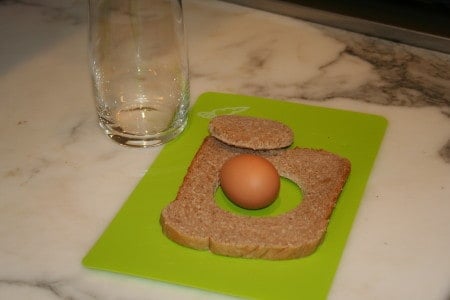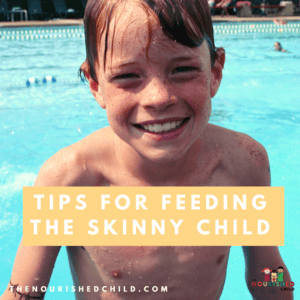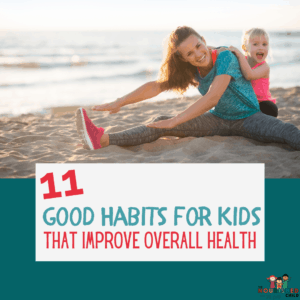Vitamin D Foods: Help Your Child Get Enough
November 20, 2019
Learn about how much vitamin D your child needs, vitamin D foods for kids, and how to include these foods in your child’s diet.
This post was created in partnership with the dairy families of New England. All opinions are my own.
There is a high prevalence of vitamin D deficiency worldwide, according to The Vitamin D Council and numerous research papers.
I’m not surprised.
Once, a pediatrician told me that nearly every time he checked a child’s vitamin D status (with a blood draw), it was low. He was located in Vermont.
In my own practice, I’ve seen kids with low levels of vitamin D, a history of multiple bone fractures, or diets that have few vitamin D foods. Oftentimes, these kids aren’t taking a supplement.
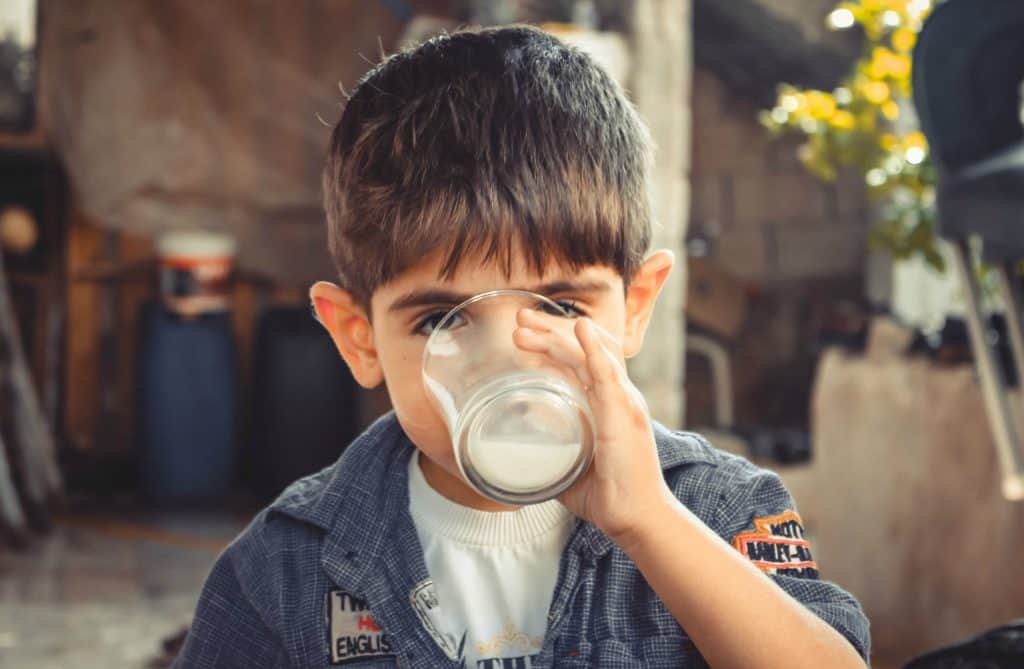
Vitamin D is the Sunshine Vitamin
Vitamin D is known as the sunshine vitamin. When the sun hits your skin it activates the vitamin. As many kids wear sunscreen (and that’s a good thing), the ultraviolet rays that trigger vitamin D production in the skin may be blocked.
To add to the picture, in the Northern states, the UVB rays are too low in the winter to activate vitamin D in the skin. Generally, Northern populations are at higher risk for a deficiency.
And don’t forget cloudy skies, the time of day, season, and air pollution, all of which potentially interfere with the UV rays reaching the skin.
All this to say, eating a diet rich in vitamin D foods is a main strategy to getting enough of this nutrient.
“…consumption of vitamin D through diet is the most dependable way to ensure adequate intake.”
Lisal Folsom, MD, FAAP from the AAP Recommendations on the prevention and management of rickets.
In this article, you learn about what this nutrient does, and which foods can help your child get a healthy dose of vitamin D. If you want to dive deeper into this nutrient, read All About Vitamin D for Kids.
What Does vitamin D Do?
Vitamin D is both an essential nutrient and a hormone. For kids, it is crucial for bone development and growth.
Essentially, vitamin D helps calcium get absorbed into the bones, making them harder and stronger.
It also plays a role in keeping the immune system strong, improves mood, and has some evidence for protecting against certain cancers, respiratory illness, heart disease, neurodegenerative diseases, and both type 1 and type 2 diabetes.

What is a normal level for a child?
A blood level of at least 50 nmol/L (or 20 ng/ml) is considered normal in children.
Some groups, like The Vitamin D Council, advocate for higher norms, more like twice this level.
They consider a normal range to be 125-200 nmol/l (or 50-80 ng/ml).
What is vitamin D deficiency?
When children don’t get enough vitamin D from a combination of food, supplementation and sunshine, they can become vitamin D deficient.
A deficiency is evaluated using a blood test. Your pediatrician will draw blood and send it to a lab. The lab will report the level as 25-hydroxy Vitamin D (25OHD).
- Vitamin D deficiency is less than 12 nanograms/mL (or <30 nmol/L).
- Insufficiency is 12-20 nanograms/mL (or 30-50 nmol/L)
There are several conditions children with a vitamin D deficiency may experience, but the most common are:
Rickets, a bone disease that causes softening of bone, malformation, and bowed legs.
Bone fractures, which may be due to weakened bones.
The U.S. incidence of rickets is 24 cases per 100,000, according to the AAP. This level is higher than other developed countries, namely the UK and Canada. Children with darker skin, and those who are breastfed are at the highest risk for rickets.
Studies have shown that children who are vitamin D deficient or who have low intake are at higher risk for bone fractures. Furthermore, bone fractures are more severe in deficient children.
Certain factors place children at higher risk for deficiency including:
- darker skin pigmentation
- lack of vitamin D supplementation in exclusively breastfed babies
- babies whose mothers had vitamin D deficiency
- a diet low in calcium and D
- living in the northern part of the US
- regular sunscreen use or covering the skin when outside
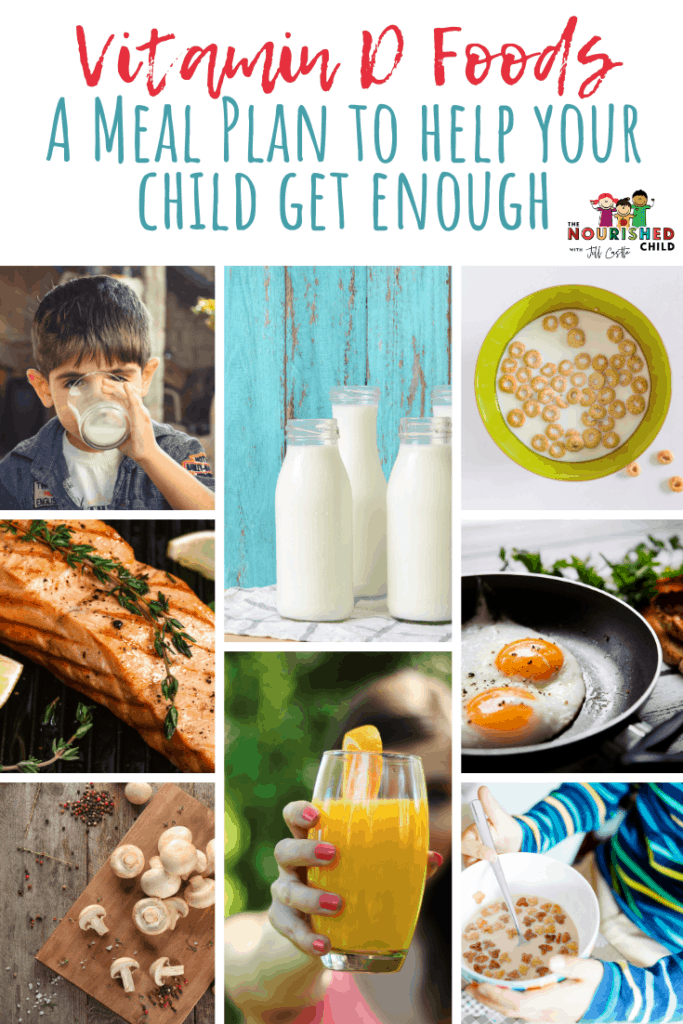
How do I prevent a deficiency?
In addition to safe sunshine exposure, two other ways to ensure your child gets enough of this nutrient are diet and vitamin D supplementation.
Let’s dive into vitamin D foods because this is something you can take action on right away.
How much vitamin D does my child need?
Babies under the age of 1 year need 400 IU of vitamin D each day.
If you’re a breastfeeding mom, you need to provide your baby with a vitamin D supplement. Generally, vitamin D drops are prescribed shortly after birth for breastfeeding babies. Talk with your doctor if your baby isn’t on them.
If your baby drinks infant formula, this nutrient is included in the formulation, however, it may not be enough.
Until your baby is drinking 1 liter of formula per day, the amount will be less than what your baby needs. I cover the details of this in The Smart Mom’s Guide to Starting Solids. But, it’s a good idea to talk with your pediatrician about additional supplementation.
Children from age 1 to 18 years need 600 IU per day. Adults need the same amount.
What Food Has Vitamin D?
Vitamin D occurs naturally in only a few foods, such as mushrooms, egg yolk, and fatty fish.
Fortunately, there are several vitamin D foods that are fortified, such as milk and ready-to-eat cereals.
You’ll generally find two forms of vitamin D in foods: D2, found in plant foods, and D3 primarily found in animal foods.

Vitamin D Milk
Vitamin-D fortified milk is the main food source of vitamin D for Americans.
Generally, you’ll find about 100-125 IU per cup of milk.
In the US, fluid milks can be fortified with vitamin D, however, the fortification is not mandated at the federal level.
Most fortification mandates are done at the state level.
Why is vitamin D added to milk?
In the 1930’s, rickets was rampant among poor children, particularly in the Northern states.
The U.S. government started fortifying milk in an effort to eradicate this bone disease in children.
Sadly, recent studies suggest a rise in the occurrence of rickets in children.
Mushrooms
Mushrooms can make nutritionally relevant amounts of vitamin D when exposed to sunlight or a UV lamp.
They are a good source of vitamin D for everyone, but especially for vegetarian and vegan children.
Vitamin D from Fish
Oily fish are naturally good sources of vitamin D. Look for salmon, tuna, mackerel, sardines and products made from fish like cod liver oil.
[Read: 5 Ways to Get Your Child to Eat More Fish]
Other Foods: D-fortified Eggs & OJ
Some packaged foods have been fortified with the sunshine vitamin. For example, many ready-to-eat cereals are enhanced with vitamin D.
Eggs and vitamin D-fortified orange juice are a source of this nutrient, too.
In the alternative milk category, nearly all beverages, such as rice, almond, oat and more are fortified with vitamin D as well as other nutrients.
[Read: 5 Surprising Things to Know about Alternative Milks]
Does Yogurt have vitamin D?
Yogurt is not typically fortified with vitamin D, much to the average consumer’s surprise. There are some yogurts that are fortified; read the label and aim for a Daily Value (DV) of 20% or higher.
[Read: How to Choose the Best Kids Yogurt]
Vitamin D Meals for Kids
I’ve put together a sample meal plan to help you visualize what adequate vitamin D foods in your child’s daily diet might look like.
What do you notice?
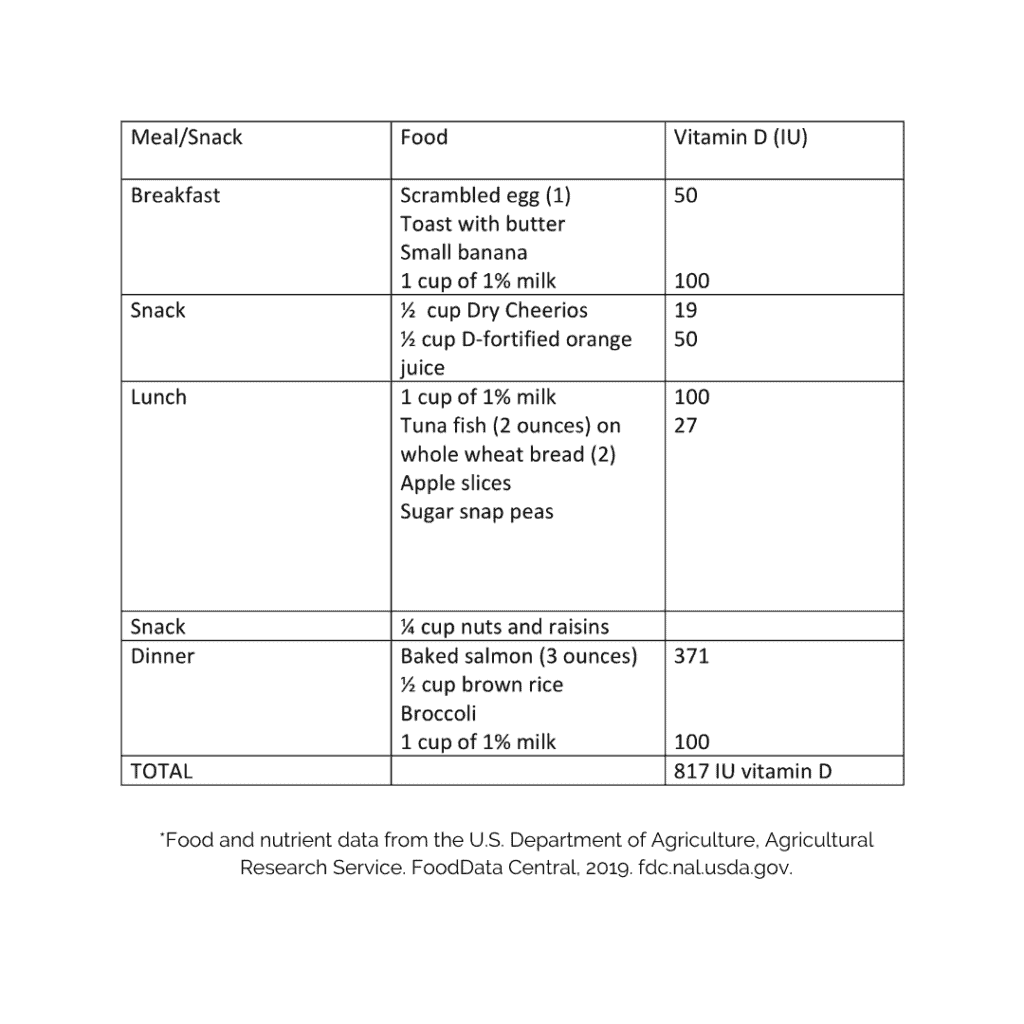
I hope you can see it’s possible to achieve adequate vitamin D intake from food. There are some key foods that anchor this meal plan.
Milk is one food that contributes quite a bit of vitamin D. A serving of milk at each meal provides a daily dose of 300 IU, or half of your child’s daily needs.
Eggs, fortified cereal and orange juice, and salmon provide the rest. Salmon is another powerhouse for vitamin D!
Easy Tips for Increasing the Sunshine Vitamin with Foods
- Serve milk with meals.
- Choose ready-to-eat cereals that pack a punch of vitamin D. I’ve outlined what I think are the healthiest cereals for kids.
- Offer fish like salmon and tuna twice a week.
- Choose vitamin D-enhanced eggs and vitamin D-fortified orange juice when shopping.
What if my child is lactose intolerant?
You can still get a good source of vitamin D from lactose-free milk.
The amount is the same as regular milk.
[Read: The Ultimate Guide for Lactose Intolerance in Children]
What if my child is allergic to milk?
You’ll need to consider a milk alternative that is fortified with vitamin D. Read the label to see amounts of vitamin D (20% DV or higher is ideal).
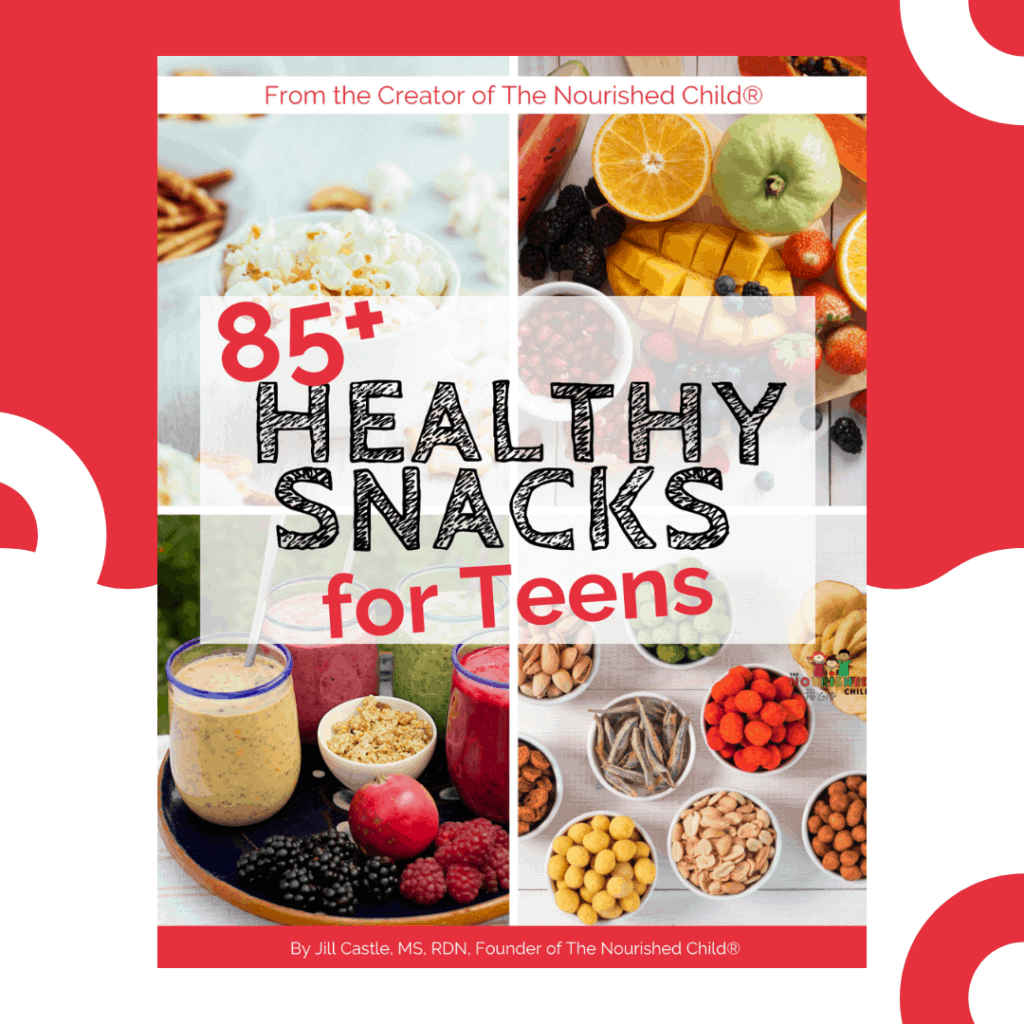
Download
85+ Healthy Snacks for Teens!
For information about the dairy farm families of New England, school nutrition, and health and wellness topics, please visit New England Dairy.com.

